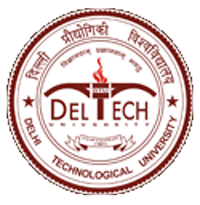Please use this identifier to cite or link to this item:
http://dspace.dtu.ac.in:8080/jspui/handle/repository/21492| Title: | EXPERIMENTAL INVESTIGATIONS ON STRUCTURAL ASPECTS OF CONCRETE MADE WITH C&D WASTE |
| Authors: | HARISH |
| Keywords: | STRUCTURAL ASPECTS C&D WASTE RECYCLED FINE AGGREGATE (RFA) RECYCLED FINE AGGREGATE (RFA) CONCRETE |
| Issue Date: | Mar-2025 |
| Series/Report no.: | TD-7830; |
| Abstract: | The present research addresses the critical imperative for sustainable waste management in the construction industry by harnessing construction and demolition (C&D) waste as Recycled Fine Aggregate (RFA) and Recycled Coarse Aggregate (RCA) in concrete production. Acknowledging the environmental advantages of RCA, persistent concerns about potential strength and durability reductions due to residual cement mortar prompt a multifaceted exploration. The study meticulously enhances RCA through a sequence of procedures: coating, chemical treatment and abrasion treatment. In the coating process, a cement paste is applied to the RCA surface. Chemical treatment entails the use of hydrochloric acid to dissolve the material adhering to the RCA surface. Abrasion treatment employs a machine to remove attached mortar from the RCA surface. This investigation explores two innovative combined treatment strategies. The first combine strategy involves chemical treatment followed by abrasion. Here, adhered mortar is weakened by immersing RCA in a 0.5mol hydrochloric acid solution, which is then removed by abrasion. The second combine strategy commences with abrasion treatment followed by cement coating; initial abrasion effectively eliminates aged mortar from the RCA surface, while subsequent modification with cement slurry provides a fresh surface. The first stage of the research begins with material characterization using XRD, SEM, and EDAX to evaluate their microstructural characteristics, followed by evaluating the workability of fresh concrete. Afterward, attention turns to the hardened properties of concrete, encompassing factors such as compressive strength, flexural strength, split tensile strength, modulus of elasticity and diverse durability attributes such as drying shrinkage, electrical resistivity and rapid chloride ion penetration. Additionally, in-depth exploration of the microstructural properties of various concrete mixtures has been conducted through XRD and SEM analyses. The findings underscore that replacing natural coarse aggregates with surface modified RCA at varying percentages significantly enhances the mechanical strength and durability characteristics of concrete. Essential considerations for optimal replacement ratios in sustainable concrete production are identified, with a vi recommended replacement of 25% for both RFA and untreated RCA instead of natural aggregates. For treated RCA (with cement slurry, abrasion, and chemical treatments), the optimal replacement range extends to 25-50%, reaching 50-75% with combined treatments. The study evaluates various concrete mixtures incorporating recycled coarse aggregates (RCA) and different surface treatments to amplify mechanical properties and durability. Noteworthy findings include: Mixtures RFA-25 and RCA-25, containing 25% RFA and 25% untreated RCA respectively, exhibit slight strength improvements, but lower modulus of elasticity, potentially leading to increased deflection. Mixtures RCACST-25 and RCACST-50, containing 25% and 50% replacement of NCA by RCA treated with cement slurry, exhibit superior strengths, higher moduli of elasticity and increased shrinkage strain, rendering them suitable for applications necessitating robust structural integrity. Mixtures RCACT-25 and RCACT-50, containing 25% and 50% replacements of NCA by RCA treated with chemicals, showcase notable improvements in strengths, moduli of elasticity, electrical resistance and permeability, positioning them as versatile choices for diverse construction projects. Mixtures RCAAT-25 and RCAAT-50, treated with abrasion and containing 25% and 50% replacements of NCA by RCA treated with abrasion, display significant enhancements in mechanical properties crucial for structural integrity, making them promising for challenging conditions. Mixtures RCACAT-25, RCACAT-50, and RCACAT-75, containing 25%, 50%, and 75% replacement of NCA by RCA treated with chemical and abrasion, exhibit improvements in strengths, moduli of elasticity and higher shrinkage strain, emphasizing their suitability for various construction projects with reduced corrosion risk and enhanced long-term behavior. Mixtures RCAACST-25, RCAACST-50, and RCAACST-75, containing 25%, 50%, and 75% replacement of NCA by RCA treated with abrasion and cement slurry, excelled in strength sand moduli of elasticity, with higher shrinkage strain, offering invaluable options for applications demanding robust structural integrity and durability in construction endeavors. The incorporation of recycled aggregates leads to a rise in vii shrinkage strain. With a higher quantity of recycled aggregates, there is a corresponding increase in shrinkage strain, necessitating greater attention is required for concrete during its initial stages to avert the onset of shrinkage cracks. Results indicate that replacing natural aggregates with surface-modified RCA significantly improves compressive, flexural, and split tensile strength, along with enhanced modulus of elasticity and durability characteristics. Optimal replacement levels were identified: 25% for untreated RCA, 25–50% for treated RCA and 50– 75% for combined treated RCA, ensuring superior mechanical performance while maintaining workability. Cost analysis highlights RCACAT-25 and RCAACST-25 as the most economical mixtures (6.78% cost reduction), followed by RCA-25 (2.18%) and RFA-25 (0.64%). Neutral-cost alternatives include RCACST-50, RCACT-50, and RCAAT-50, while RCACT-75 and RCAACST-75 offer enhanced durability with a 1.97% cost increase. These findings emphasize the economic feasibility of treated RCA, demonstrating cost benefits while maintaining structural integrity. This research advances sustainable concrete technology by promoting C&D waste utilization, reducing reliance on natural resources, and mitigating environmental impact. It offers valuable insights into the intricate relationship between surface-modified recycled aggregates and concrete properties, facilitating their integration into structural applications and supporting the transition toward greener, more resource-efficient and economically viable construction practices. |
| URI: | http://dspace.dtu.ac.in:8080/jspui/handle/repository/21492 |
| Appears in Collections: | Ph.D. Civil Engineering |
Files in This Item:
| File | Description | Size | Format | |
|---|---|---|---|---|
| Harish Ph.D..pdf | 8.61 MB | Adobe PDF | View/Open |
Items in DSpace are protected by copyright, with all rights reserved, unless otherwise indicated.



